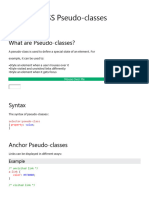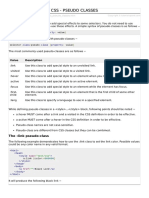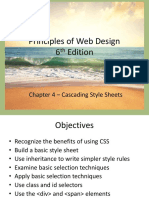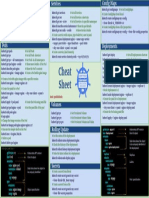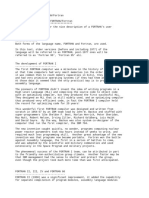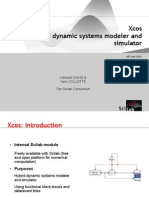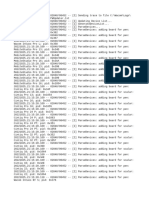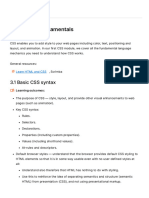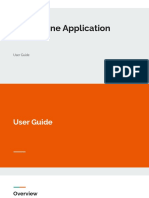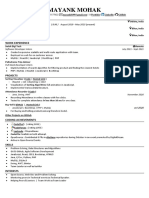0% found this document useful (0 votes)
24 views2 pagesPseudo Class and Elements
The document explains pseudo-classes and pseudo-elements in CSS, which enhance styling capabilities without modifying HTML. Pseudo-classes target elements based on user interaction or document structure, while pseudo-elements style specific parts of elements or insert content. Mastering these tools allows developers to create dynamic and interactive web experiences efficiently.
Uploaded by
Nallamilli Naga SreyaCopyright
© © All Rights Reserved
We take content rights seriously. If you suspect this is your content, claim it here.
Available Formats
Download as PDF, TXT or read online on Scribd
0% found this document useful (0 votes)
24 views2 pagesPseudo Class and Elements
The document explains pseudo-classes and pseudo-elements in CSS, which enhance styling capabilities without modifying HTML. Pseudo-classes target elements based on user interaction or document structure, while pseudo-elements style specific parts of elements or insert content. Mastering these tools allows developers to create dynamic and interactive web experiences efficiently.
Uploaded by
Nallamilli Naga SreyaCopyright
© © All Rights Reserved
We take content rights seriously. If you suspect this is your content, claim it here.
Available Formats
Download as PDF, TXT or read online on Scribd
/ 2

















